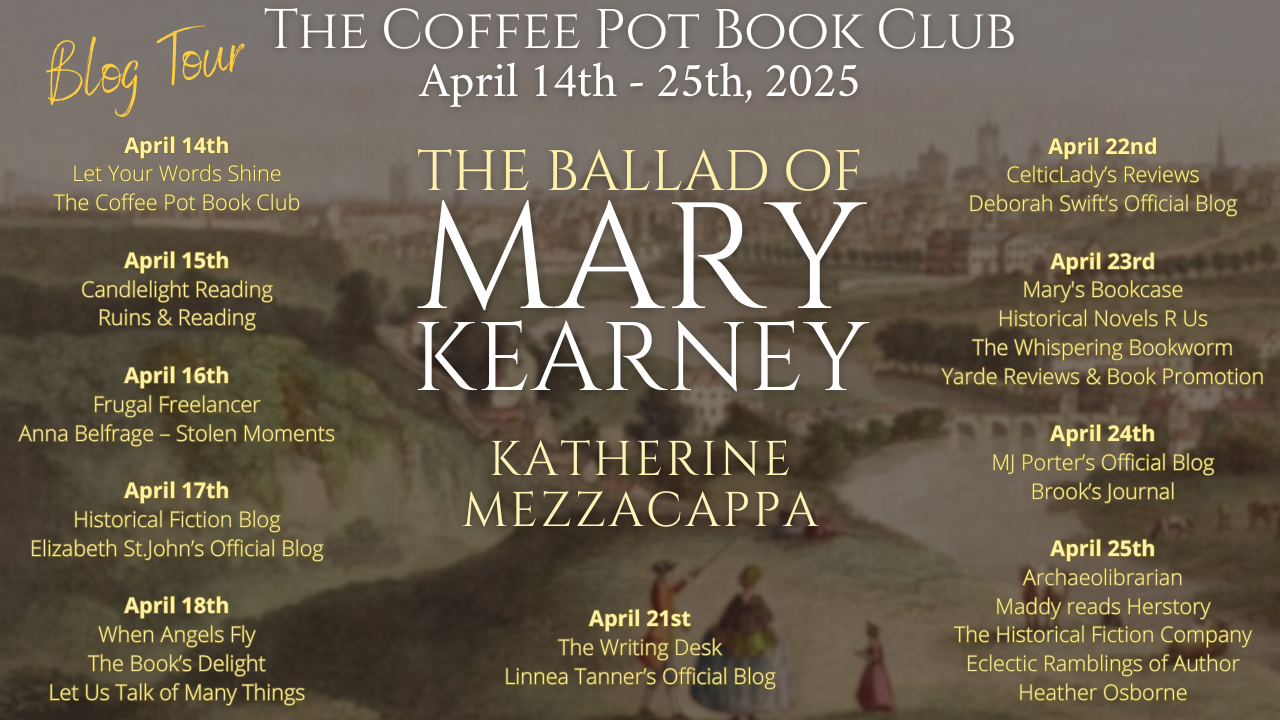
20 Apr Katherine Mezzacappa The Ballad of Mary Kearney #HistoricalFiction #IrishHistory #WomensFiction #BlogTour #TheCoffeePotBookClub @cathiedunn
FEATURED AUTHOR: KATHERINE MEZZACAPPA
I‘m delighted to welcome Katherine Mezzacappa as the featured author in The Coffee Pot Book Club Blog Tour being held between April 14th – 25th, 2025. Katherine Mezzacappa is the author of the Historical Fiction, The Ballad of Mary Kearney, published by Histria on 14th January 2025 (288 pages).
Below are highlights of The Ballad of Mary Kearney, Katherine Mezzacappa’s author bio, and a guest blog about the historical background for the novel.
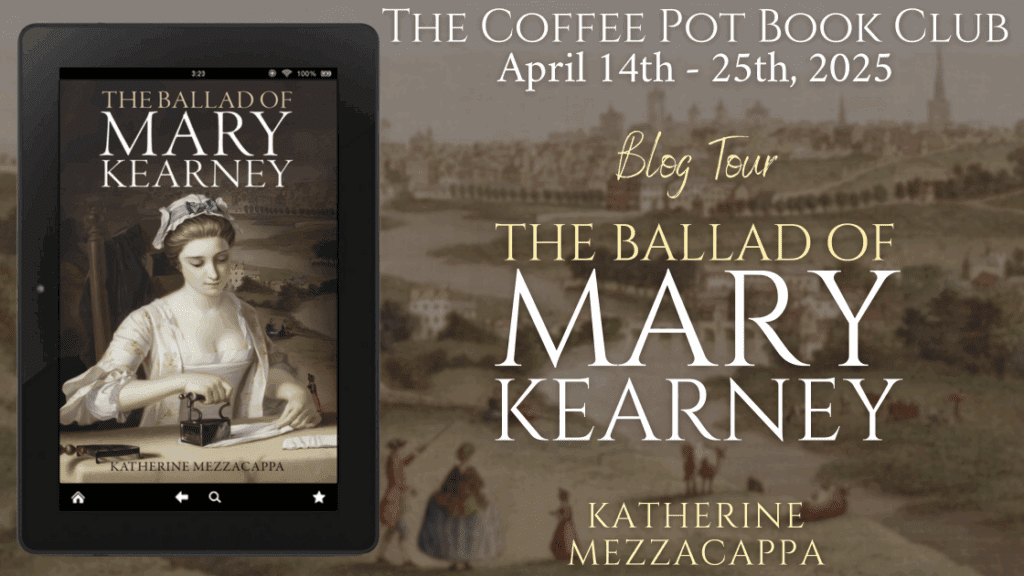
Tour Schedule Page: https://thecoffeepotbookclub.blogspot.com/2025/03/blog-tour-the-ballad-of-mary-kearney-by-katherine-mezzacappa.html
HIGHLIGHTS: THE BALLAD OF MARY KEARNEY
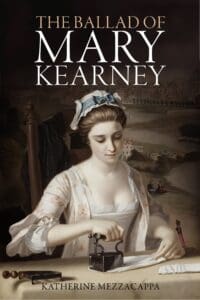
The Ballad of Mary Kearney
by Katherine Mezzacappa
Blurb:
‘I am dead, my Mary; the man who loved you body and soul lies in some dishonorable grave.’ In County Down, Ireland, in 1767, a nobleman secretly marries his servant, in defiance of law, class, and religion. Can their love survive tumultuous times?
‘Honest and intriguing, this gripping saga will transport and inspire you, and it just might break your heart. Highly recommended.’ Historical Novel Society
‘Mezzacappa brings nuance and a great depth of historical knowledge to the cross-class romance between a servant and a nobleman.’ Publishers Weekly.
The Ballad of Mary Kearney is a compelling must-read for anyone interested in Irish history, told through the means of an enduring but ultimately tragic love.
Triggers: Some scenes of violence, including judicial killing; rape.
Buy Link:
Universal Buy Link: https://books2read.com/u/3yxPpJ
AUTHOR BIO: KATHERINE MEZZACAPPA
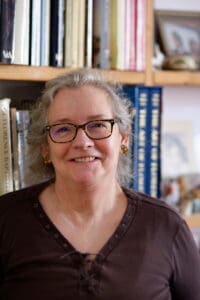
Katherine Mezzacappa is Irish but currently lives in Carrara, between the Apuan Alps and the Tyrrhenian Sea. She wrote The Ballad of Mary Kearney (Histria) and The Maiden of Florence (Fairlight) under her own name, as well as four historical novels (2020-2023) with Zaffre, writing as Katie Hutton. She also has three contemporary novels with Romaunce Books, under the pen name Kate Zarrelli.
Katherine’s short fiction has been published in journals worldwide. She has in addition published academically in the field of 19th century ephemeral illustrated fiction, and in management theory. She has been awarded competitive residencies by the Irish Writers Centre, the Danish Centre for Writers and Translators and (to come) the Latvian Writers House.
Katherine also works as a manuscript assessor and as a reader and judge for an international short story competition. She has in the past been a management consultant, translator, museum curator, library assistant, lecturer in History of Art, sewing machinist and geriatric care assistant. In her spare time she volunteers with a second-hand book charity of which she is a founder member. She is a member of the Society of Authors, the Historical Novel Society, the Irish Writers Centre, the Irish Writers Union, Irish PEN / PEN na hÉireann and the Romantic Novelists Association, and reviews for the Historical Novel Review. She has a first degree in History of Art from UEA, an M.Litt. in Eng. Lit. from Durham and a Masters in Creative Writing from Canterbury Christ Church. She is represented by Annette Green Authors’ Agency.
Author Links:
Website: https://katherinemezzacappa.com/
Facebook: https://www.facebook.com/katherinemezzacappafiction
LinkedIn: https://www.linkedin.com/in/katherine-mezzacappa-09407815/
Instagram: https://www.instagram.com/katmezzacappa/
Bluesky: https://bsky.app/profile/katmezzacappa.bsky.social
Amazon Author Page: https://www.amazon.com/author/katherinemezzacappa
GUEST POST: KATHERINE MEZZACAPPA
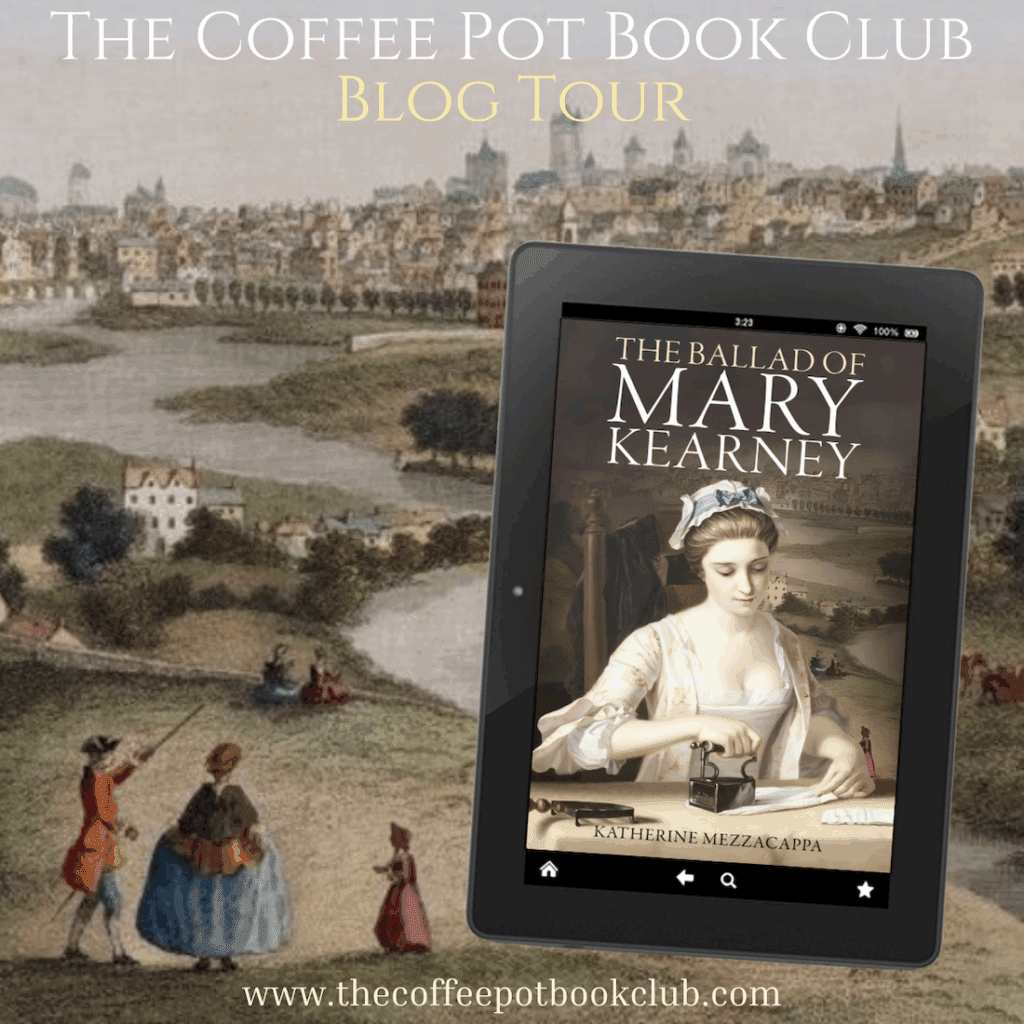
Thank you for inviting me onto your blog today, Linnea.
You have asked me about the historical background to The Ballad of Mary Kearney. In a way it owes a lot to my own historical background, even if I wasn’t around in the 18th century! I was born in Carrickfergus in Co Antrim, a coastal town dominated by a massive Norman castle, built by an Anglo-Norman knight, John de Courcy, in 1177. William of Orange landed in Carrickfergus in 1690. Louis MacNeice’s poem of 1937 with the town’s name as its title references the fault lines in the north of Ireland that I remember from childhood, when he writes: ‘The Scotch Quarter was a line of residential houses/ But the Irish Quarter was a slum for the blind and halt.’ There is too the folk song, beginning ‘I wish I was in Carrickfergus.’
It was also the place where a Presbyterian farmer, William Orr, was hanged in 1797, having been found guilty of administering the oath of the United Irishmen to a soldier, after what was widely seen as a show-trial. I first learned of the United Irishmen and the Rebellion of 1798 in a Belfast primary school in 1973. It was the United bit that startled me because it really didn’t fit with the divisive narrative of the Troubles. Here’s one of the shorter versions of the oath: ‘I, [name], do voluntarily declare that I will persevere and endeavour to form a Brotherhood of affection amongst Irishmen of every religious persuasion [my italics]. I do further declare that I will persevere and endeavour for a Parliamentary Reform, and for an equal representation of all the people in Ireland.’ People then meant men, for female emancipation was still a long way in the future, but what was so remarkable for me, aged 11, is that here was an organisation whose stated aim was equal rights regardless of creed, something that was so contrary to what was happening in Belfast then. Furthermore, its leadership was mainly Protestant.
Another element of the historical inspiration for my novel was the Anglo-Irish ‘Big House.’ Ascendancy landowners, granted their estates in the land grabs of the seventeenth-century under Cromwell and then William III, built vast homes for themselves, often in the Palladian style they had observed when on the Grand Tour in Italy. The rents of tenant farmers, whose forbears had once owned the land they farmed, would keep a titled family in considerable magnificence – the family might not even be in residence much of the time (Maria Edgeworth’s novel Castle Rackrent, 1800, has this as a theme). These Ascendancy families were effectively cut off from interaction with the local population (excepting the servants) by a demesne wall enclosing often elegant parkland. Land reform, rising costs, the difficulty of getting domestic staff post WWI, and finally independence led to the decline of these landed estates. Around 275 of these houses were burned by the IRA, selected often according to how bad the family had been as a landlord.
I was familiar with the remnants of this landed class from a young age. My father worked for the Public Record Office in Belfast and he would regularly take me with him when he went to meet the owners of these houses to organise the transfer of their archives to Belfast. So, I would be left with a book in some magnificent but sometimes shabby room in a vast, almost uninhabited mansion, while Dad worked. I went back to one of these houses in the mid-1980s, as an adult. I remember a vast oak staircase you could have ridden a horse up, a glass-less, rusting Victorian greenhouse with trees growing through it, and the elderly owner and her middle-aged daughter living in two rooms with a bar fire. The daughter showed me the ballroom, with its wall of rare chinoiserie wallpaper. She said she thought it was looking a bit scruffy so she’d been cutting out photographs of birds from the Sunday magazines and glueing them onto it (I was a museum curator at the time and just about had a fit).
The Ballad of Mary Kearney is set in the heyday of these grand houses. What would happen, if the heir to one of them cast eyes on a maidservant sent in from one of the farms beyond his demesne wall? What would happen to a love which not only breached class barriers, but was also expressly forbidden by law in Ireland at that time, because the two were of different religions? And if the aims of the United Irishmen appealed to this principled young man, what would be the consequences to him and the wife he had chosen against all the odds?
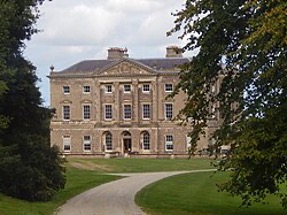
Image Castle Ward: Castle Ward, Co Down. I was taken to this house as a small child, when the owner was still in residence. Castle Ward is now in the care of the National Trust.
Image: Irishdeltaforce. Wikimedia Commons
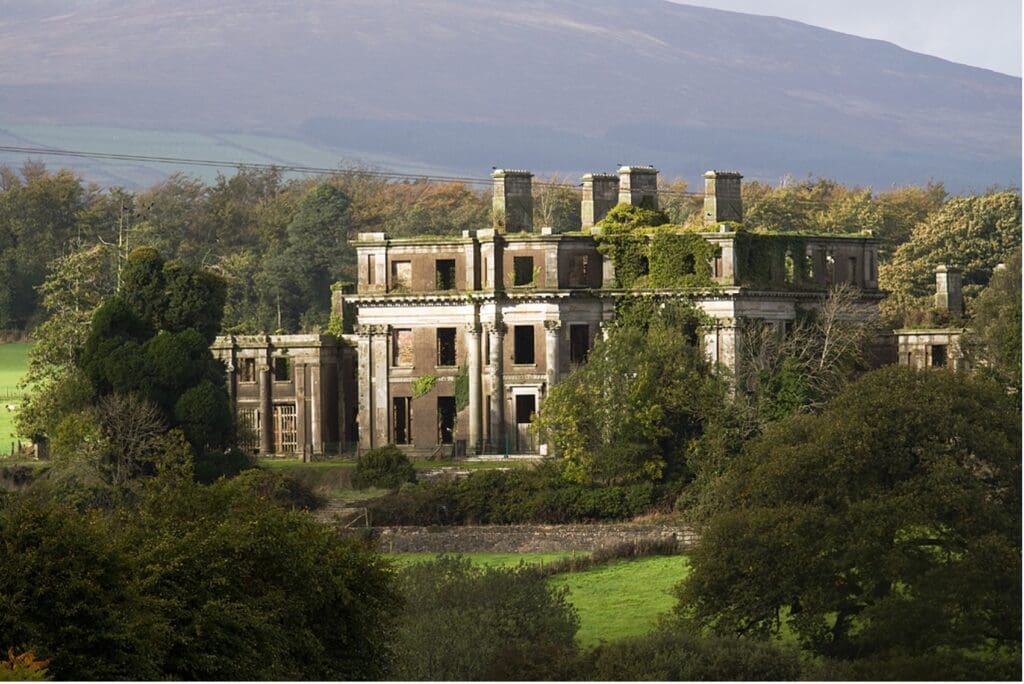
Image Castletown House: Castletown House, Co Kildare. At one time, the needs of one family were taken care of by eighty-six servants. Castletown is now in the care of the Office of Public Works, Ireland Image: Lori Strang, Wikimedia Commons
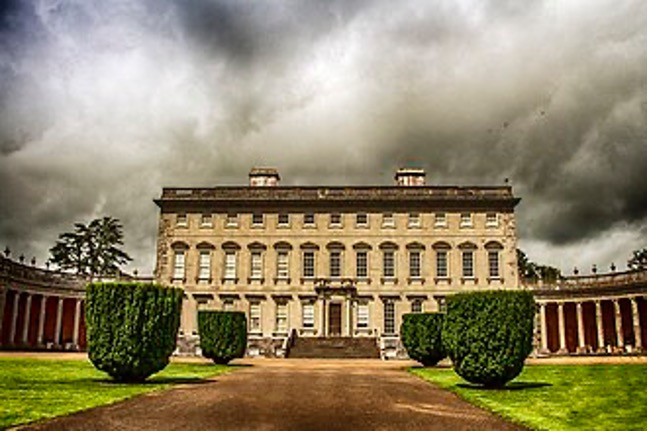
Image Castleboro House: The ruins of Castleboro House, Co Wexford, burned by the IRA in 1923. Source: Mike Searle CC BY-SA 2.0 – Geograph Project
 Twitter: @cathiedunn
Twitter: @cathiedunn
Instagram & Threads: @thecoffeepotbookclub
Bluesky: @cathiedunn.bsky.social


Cathie Dunn
Posted at 05:46h, 21 AprilThank you so much for hosting Katherine Mezzacappa today, Linnea. What an interesting post!
Take care,
Cathie xo
The Coffee Pot Book Club
Linnea Tanner
Posted at 01:13h, 22 AprilHi Cathie-It was my pleasure to host Katherine Mezzacappa and feature her guest post about the historical background for “The Ballad of Mary Kearney.”